How to Calculate Impurity Response When There Are Two APIs in the Sample - Tip76
OBJECTIVE or GOAL
Welcome back to Get Empowered! In the last Empower tip-of-the-week post for Empower Software, we answered a submitted reader question and learned why the retention time of a peak is slightly different from the retention time of the UV apex spectrum for the peak (Tip #75). (See the link at the bottom of our post to ask your own question, or to provide a tip of your own!)
In this week’s tip, I will answer a question on calculating impurities.
Question: How do you calculate impurity response when there are two APIs in the sample?
Another great question.
Let me show you how it is done.
ENVIRONMENT
- Empower
PROCEDURE
- In this chromatogram, we see two API peaks – API A and API B. We also see some impurity peaks, some related to API A and some related to API B. The goal is to calculate the %Area against the Main Component where the Main Component could be API A or API B.
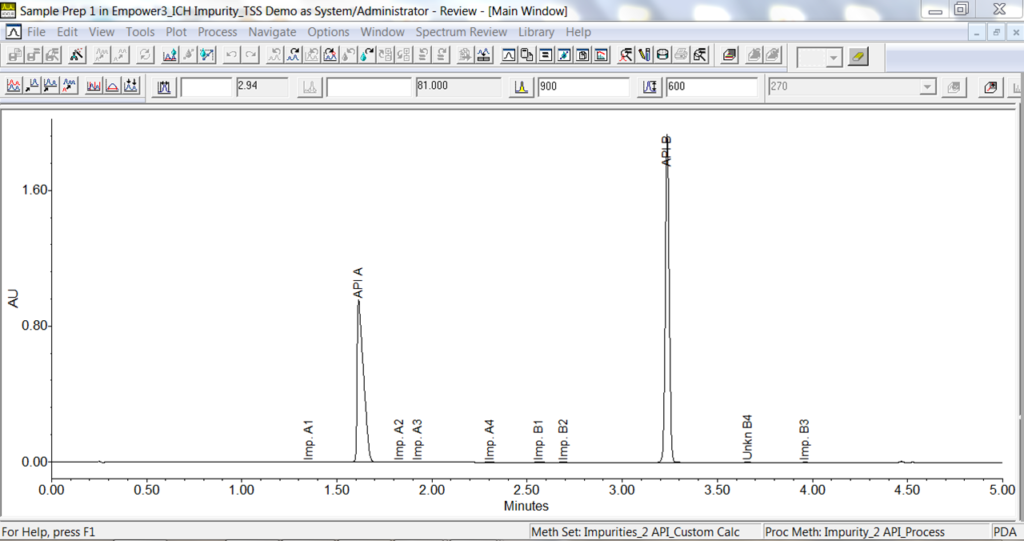
- On the Components tab of the Processing Method, we assign the CCompRef1 to be the API, which corresponds to each impurity peak.
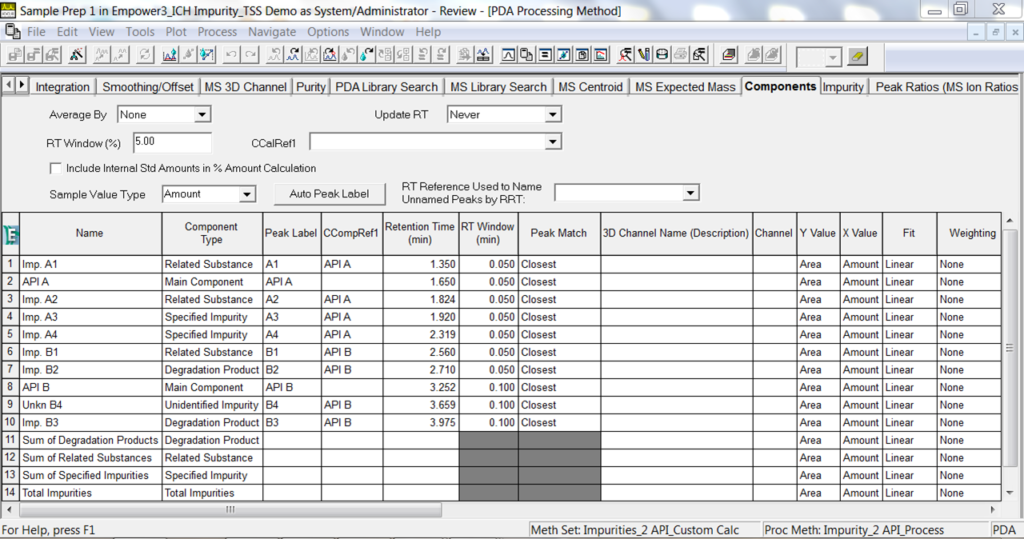
- We create a custom peak field that calculates %Area against the Main Component with a simple formula using the area of the CCompRef1 peak.
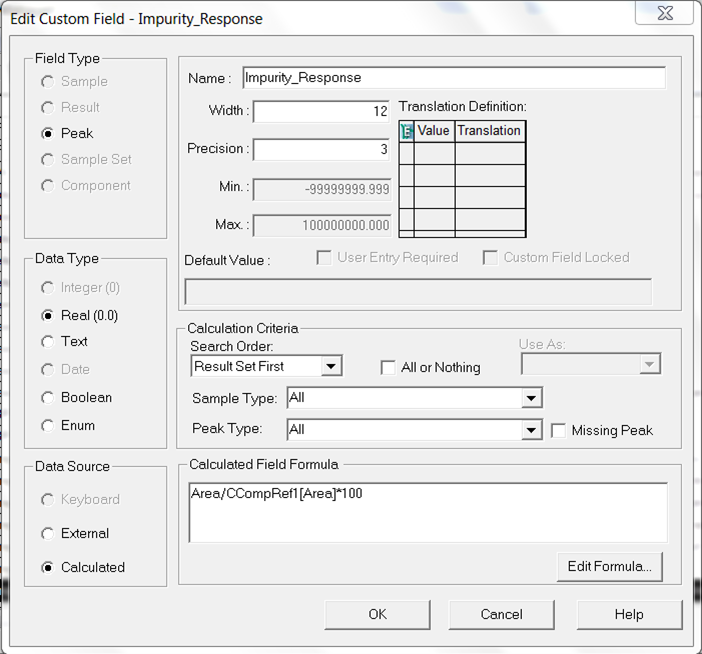
- Back in the Processing Method, we go to the Impurity tab and set the Impurity Response to the name of the custom field.
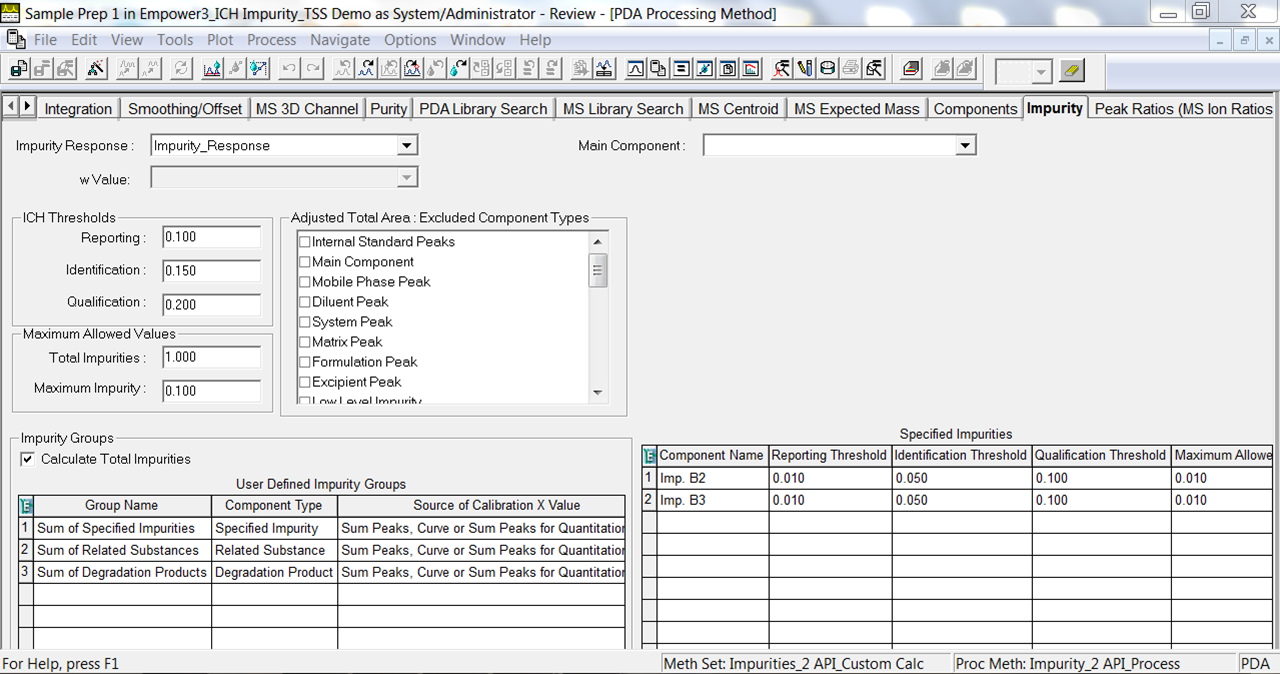
- We integrate/quantitate and see the Impurity Response calculated for the impurity peaks using the proper API.
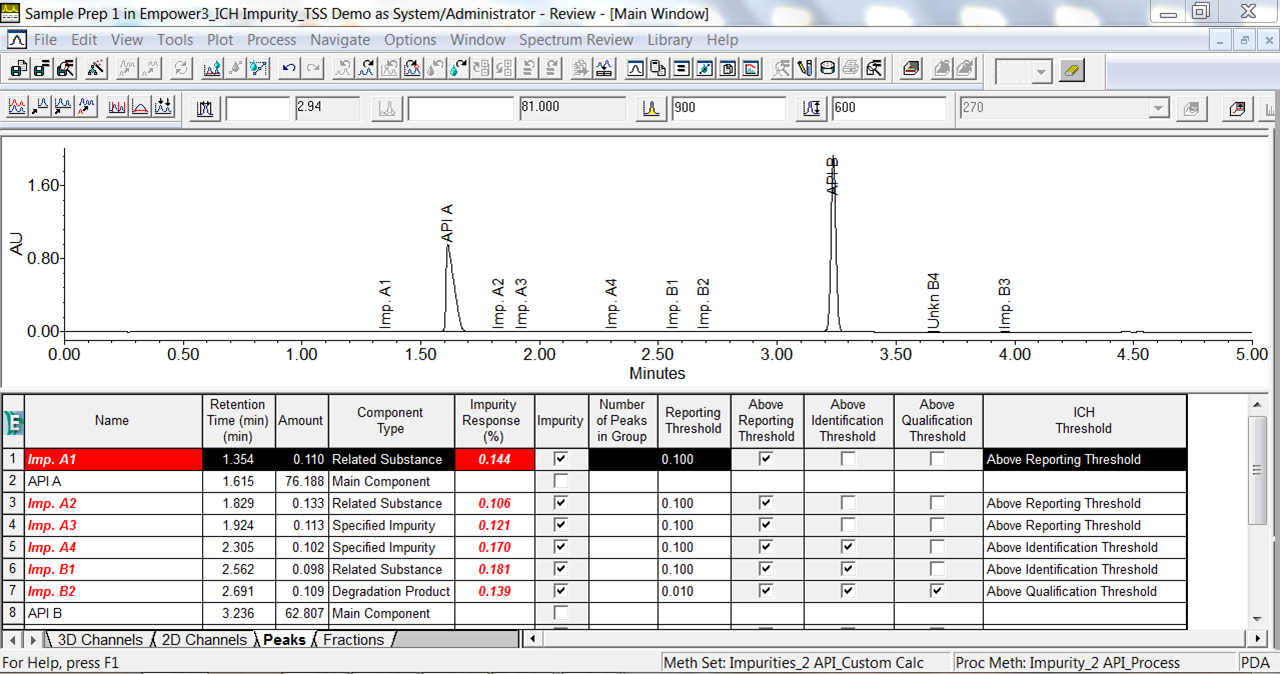
It’s that easy!
ADDITIONAL INFORMATION
This procedure can be followed using the QuickStart or Pro interface.
id69300, EMP2LIC, EMP2OPT, EMP2SW, EMP3GC, EMP3LIC, EMP3OPT, EMP3SW, EMPGC, EMPGPC, EMPLIC, EMPOWER2, EMPOWER3, EMPSW, SUP

